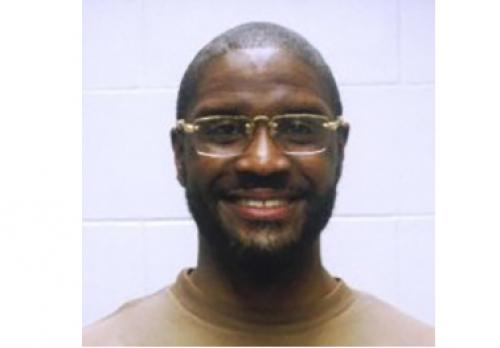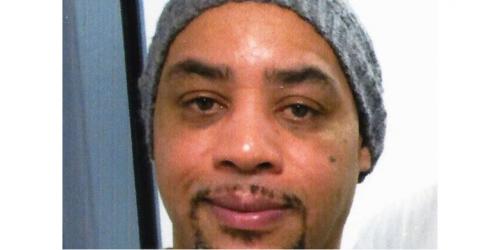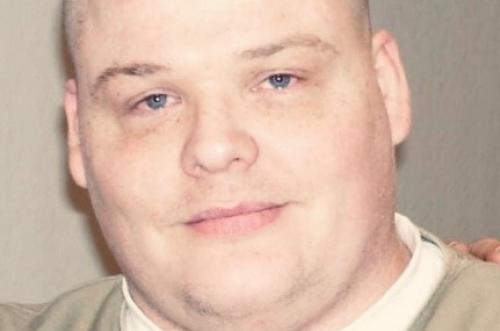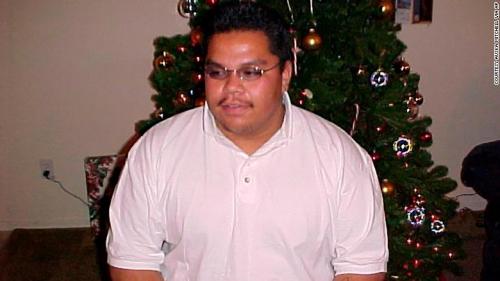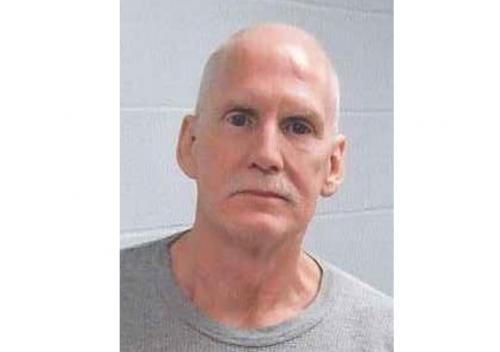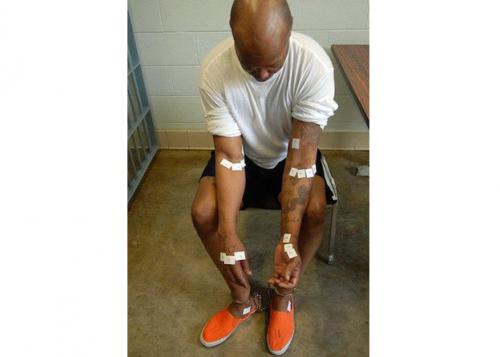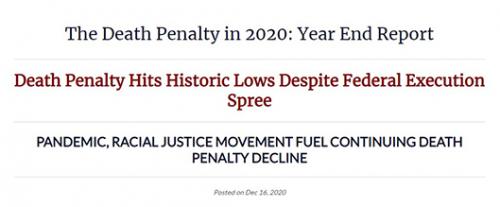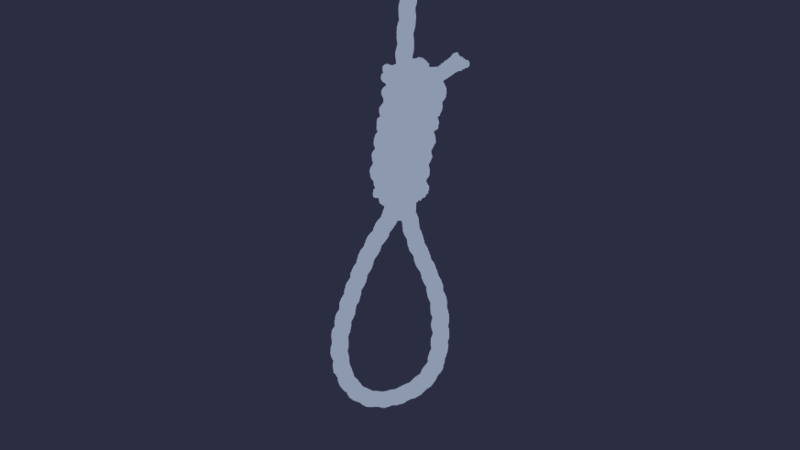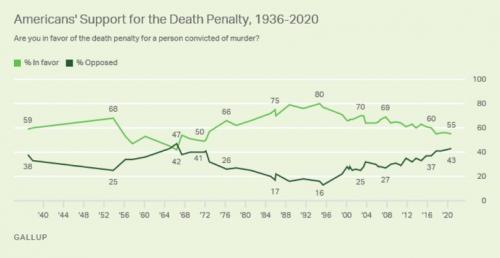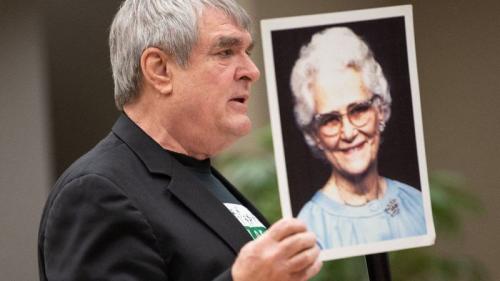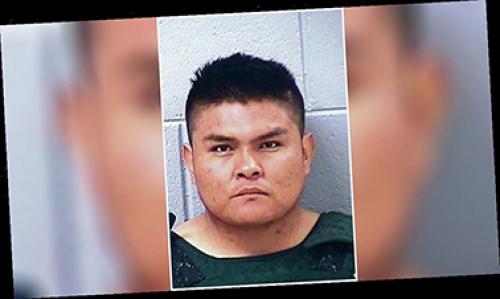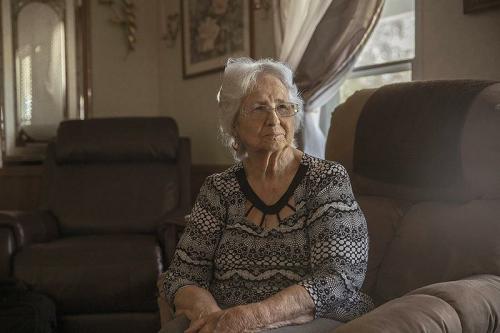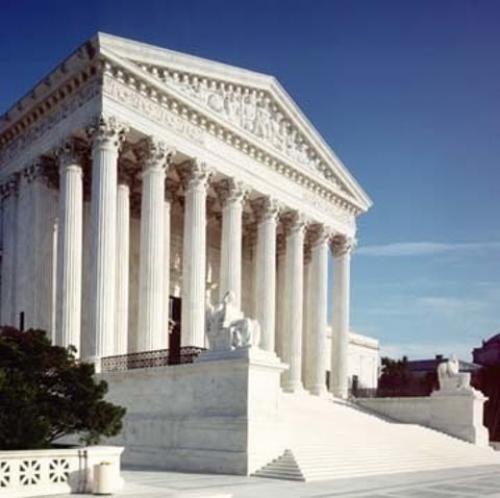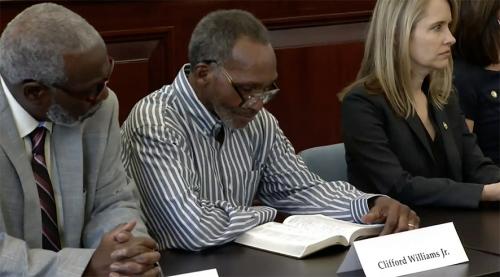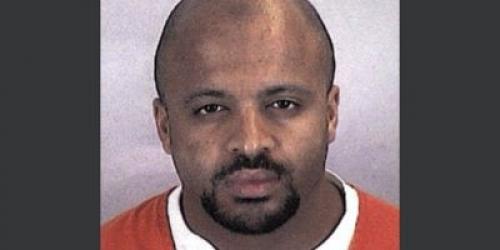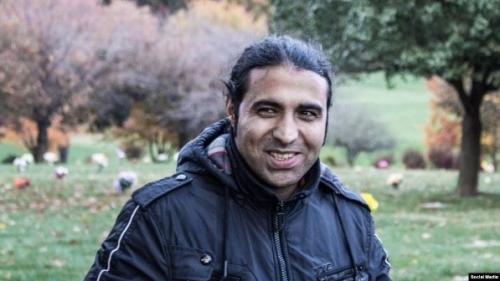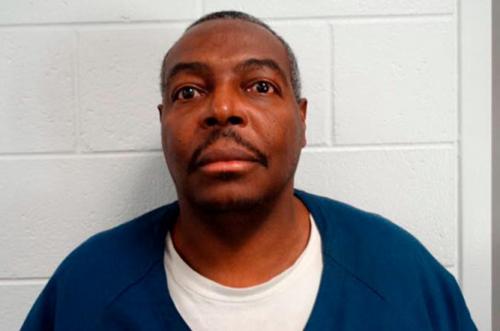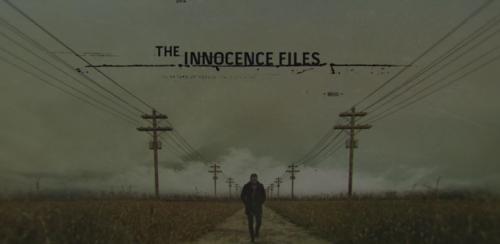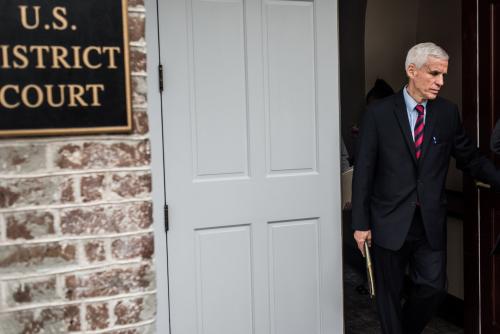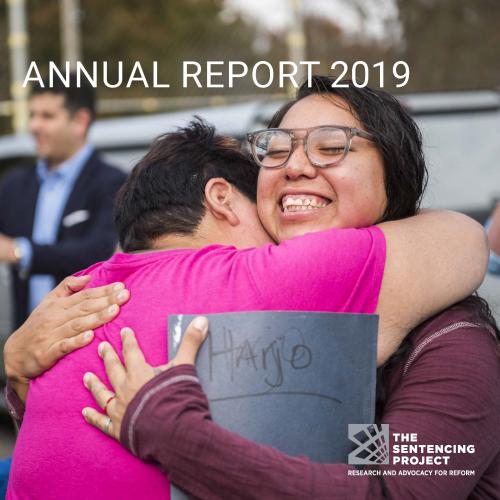situation:The United States, by an administrative point of view, are composed of 50 States and 3 jurisdictions (District of Columbia, Federal Government and Military Administration).
To date, the death penalty no longer exists in 19 of the 50 U.S. States and the District of Columbia, better known as the nation’s capital city Washington D.C. The most recent death penalty abolition took place in Delaware in 2016. [See chapter “Abolitions and de facto moratoriums”].
The death penalty is still in effect in 31 States and in 2 jurisdictions (Federal Government and Military Administration). Of these 33 “retentionists”, 13 have not carried out an execution in at least 10 years and an additional 5 have not had an execution in at least 5. In practice, only 13 jurisdictions carried out executions in the last 5 years.
In 2016, there were 20 executions carried out in only 5 States, compare to 28 executions in 2015, carried out in 6 States.
The number of inmates on death row also decreased. As of 1 October 2016, there were 2,902 inmates under a sentence of death, a decrease of 41 from 1 January 2016.
There were 30 new death sentences in 2016, in 13 States (19 less than in 2015).
Problems with executions in Arizona, Ohio and Oklahoma, states’ inability to obtain lethal injection drugs, exonerations of people who were wrongly convicted, the availability of prison terms of life without parole and the cost of capital trials and the appeals process, are main factors in the persistent decline of executions and death sentences.
Executions
Twenty executions took place in only 5 of the 31 States with the death penalty in 2016: Georgia (9); Texas (7); Alabama (2); Missouri (1); Florida (1).
It is the first time since Texas resumed executions in 1982 that it doesn’t lead the list of executioners.
The 20 executions in 2016 represent the lowest number since 1991. Also the fact that only 5 States have carried out executions is a record, it is the lowest number since 1988.
Since death penalty was reintroduced in 1976 up to 31 December 2016, 1,442 executions have been carried out in the USA. Compared to population, the states that carry out more executions are, in order, Oklahoma, Texas, Delaware, Virginia and Missouri.
Since 1976, three States have executed only “volunteers”, i.e. death row inmates who voluntarily asked to hasten the execution process: Pennsylvania, Oregon and Connecticut. As a whole, since 1976, 143 inmates have been executed as “volunteers”, 10% of all executed.
All executions in 2016 were carried out by lethal injection. And all have involved men. The average age of those executed in 2015 is 48,7 years. The average time between sentencing and execution of those put to death in 2015 was 18.5 years. At the extremes of this average there is a Texas detainee who was executed after 7 years (he was not a "volunteer") and one from Georgia, killed after 36 years on death row.
As for race, 16 of those executed in 2016 were White, 2 Black, and 2 Latino. The 20 executed in 2016 had been convicted of 26 murders: the victims were 24 White and 2 Latino.
Death Sentences
Besides the executions, death sentences are also constantly decreasing. That is for the minor propensity of juries to hand down the maximum penalty and for always more widespread tendency of prosecutors to “content” themselves with minor sentences in exchange for shorter and more secure trials.
According to the Death Penalty Information Center, there were 30 new death sentences in 2016 (19 less than in 2015), the lowest number since the death penalty was reinstated in 1976. The maximum was in 1996, with 315 capital sentences.
For the sixth consecutive year, the number of news death sentences is under 100.
Of the 32 States and 2 jurisdictions (Federal Government and Military Administration) with the death penalty in 2016, 13 imposed a death sentence. Death sentences, like executions, were largely clustered in a few States. As usual, the State which handed down the most part of the sentences was California (9) which is the most populated in the USA. Two States handed down 4 death sentneces each (Texas and Ohio). Alabama handed down 3 death sentences, Florida 2 and Arizona, Arkansas, Kansas, North Carolina, Nevada, Oklahoma, Oregon e Pennsylvania, 1.
Texas, that for many years has leaded the number of executions, in 2016 issued only 4 death sentences, the second lowest of every time. In 2015 the sentences had been 2. The maximum was 48, in 1999. As for ethnicity, in 2016 the new death sentences were issued against 17 Blacks, 6 Whites, 3 Asian and 3 Latin-American.
Death Row
The number of people on death row continued to decline. According to figures from NAACP-LDF “Death Row USA”, as of 31 October 2016, there were 2,902 inmates on death rows across the country, a decrease of 41 compared to 1 January 2016. This is the second time since Spring of 1995 that the number of inmates decreases under 3,000. The first time was 2015. At the time the death row population was growing after the Furman v. Georgia sentence of 1972 that had struck down the death penalty, and the Gregg v. Georgia sentence of 1976 that had brought it back.
The total population on death row has decreased every year since 2001. In 2000, 3,670 inmates were under a sentence of death.
California continued to have the largest death row population (745), followed by Florida (395), Texas (254), Alabama (194), and Pennsylvania (175). California, with 40 million people, is by far the most populous US state (Texas is second, with 28 million, Florida is third with 21 million). Its death row is so populated in part in relation to the high number of death sentences issued, but partly because it has carried out very few executions, 13 from 1976 to today. The latest execution dates back to January 2006.
The racial demographics of death row nationwide are 42.2% white, 41.8% black, 13% Latin-American, 1.8% Asian, and 0.9% Native American Overall, 57% of inmates on death row belong to racial minorities.
Divided by gender, there are 54 women (1.8%) and 2,848 men (98.1%) on the United States’ death rows.
Abolitions and “de facto” moratoriums
To date, the death penalty no longer exists in 19 of the 50 U.S. States and 1 jurisdiction (District of Columbia) [In brackets the year of abolition]: Alaska (1957), Connecticut (2012), Hawaii (1957), Illinois (2011), Iowa (1965), Maine (1887), Maryland (2013), Massachusetts (1984), Michigan (1846), Minnesota (1911), Nebraska (2015), New Jersey (2007), New Mexico (2009), New York (2007), North Dakota (1973), Rhode Island (1984), Vermont (1964), West Virginia (1965), Wisconsin (1853), and District of Columbia (1981).
In 2015, the death penalty had been abolished in Nebraska, but reintroduced in November 2016 after a ballot question reversing the legislature's repeal of the death penalty and restoring capital punishment in the state passed with 57% of the vote.
In four other States – Washington, Colorado, Pennsylvania and Oregon – the Governors granted a stay of executions and essentially put executions on hold because of concerns about the death penalty system.
In Ohio, Governor John Kasich has postponed all executions to at least 2016 as a result of the practical and procedural problems related to the supply of lethal drugs. On April 1, 2016 the Attorney General announced that the State will not carry out executions not even in 2016.
On September 14, 2016, in Oklahoma, State Attorney General Scott Pruitt said the executions would be suspended for at least another 2 years. In Oklahoma, executions have been suspended since it was discovered that on January 15, 2015, to kill Charles Warner, the prison administration used potassium acetate instead of potassium chloride. A grand jury charged with investigating the case found a series of serious defaults on the part of the penitentiary administration in more than one of the executions carried out since 2014.
On September 18, 2016, in North Carolina, Robeson County District Attorney Johnson Britt, and several experts, agreed to predict that executions will not resume until "several years." In the state, following a series of legal actions, the latest execution dates back to August 2006, and since January 2007, the state is considered in a condition of "informal moratorium" after a court has suspended executions.
Not a moratorium, but a massive annulment of death sentences was decided on December 22, 2016 in Florida. The State Supreme Court, in Asay v. State and Mosley v. State, considered the approximately 200 death sentences issued from 2002 to today unlawful, while upheld the constitutionality of the over 150 sentences issued before that date. As is well known, in January, the United States Supreme Court with the Hurst v. Florida had declared unconstitutional that part of the capital law that allows death sentences without the unanimity of the jury.
Of the 33 jurisdictions where the death penalty is still in effect, 13 have not carried out an execution in more than ten years (hence, we can consider that they are implementing a “de facto moratorium”): California (2006), Colorado (1997), Kansas (1965), Montana (2006), Nebraska (1997), Nevada (2006), New Hampshire (1939), North Carolina (2006), Oregon (1997), Pennsylvania (1999), Wyoming (1992), U.S. Federal Government (2003), and U.S. Military (1961).
Five other States have not had an execution in over 5 years: Kentucky (2008), Louisiana (2010), South Carolina (2011), Utah (2010) and Washington (2010).
Legislation
During 2016, there were many legislative proposals concerning the death penalty, some towards abolition, others to create stricter norms regarding its application and others to facilitate its application. Many of these bills were short-lived, blocked in the preliminary phases of the legislative review process. It must be recalled that the United States Parliaments focus legislative action early in the year, and each state has a deadline by which the new laws are to go, otherwise they should be presented in the following year. These are the bills that have passed at least the early stages of discussion.
In Delaware, on 28 January 2016, the House rejected 23-16 a bill (SB 40) that would have abolished the death penalty.
In Missouri, on 28 January 2016, an abolitionist bill has passed the Senate Judiciary Committee 4-3, with the favourable vote of two Republican senators and two Democrats. On 13 May 2016, the bill was placed in the so-called “informal calendar”, which means that the measure this year will not go ahead.
In New Hampshire, on 3 March 2016, the Senate rejected 12-12 a bill that would have abolished the death penalty, but agreed to discuss one that would establish a moratorium in light to develop a method to prevent miscarriages of justice. New Hampshire is the only New England state to still have the death penalty. The last execution was in 1939, and currently there is only one detainee on death row. In the Senate, a tie vote is tantamount to a defeat. Again in New Hampshire, on 10 March, the House rejected by a vote by acclamation the HB 1522 bill that would have extended the death penalty to “terrorist crimes with more than one victim and the murders committed while the victim exercises its civil rights, like voting, attending school, or else.”
In Utah, on 3 March 2016, the Senate Judiciary Committee rejected 2-5 bill HB 136 that would have added the aggravating circumstance of “human trafficking” to those for which the death penalty can be pursued. The bill passed the House Judiciary Committee on February 2 (6-3), and the full House on 12 February (44-28). Also in Utah, on 1 and 2 March 2016, the Senate approved on first and second reading the abolition of the death penalty (SB189). The House's Justice Commission approved it on March 8, but on 11 March it expired the deadline for the House to give the final vote.
On 7 March 2016, Florida Governor Rick Scott, Republican, has ratified the law HB 7101. The new law amends the state capital law that was declared unconstitutional on 12 January 2016 by the Supreme Court of the United States. The new law provides that juries can now issue a guilty verdict 10-2 (before, it was 7-5), and that the decision of the jury is binding on the court. In 28 of the 31 states that use the death penalty, unanimity is required to issue a death sentence. The exceptions are Florida, Alabama and Delaware.
In Alabama, on 7 April 2016, Senators have voted 20-6 to establish an “Innocence Inquiry Commission” to review some capital convictions. Under the narrowly tailored-bill, the panel would review new evidence in death row cases that hadn’t previously been heard by a court. Republican Sen. Dick Brewbaker, the bill’s sponsor, said he supports the death penalty, but the state should make sure people are guilty "For people to regain confidence in the capital system". At the end of the 2016 legislative session, the bill was shelved with the formula “Updated Sine Die”.
On May 3, 2016, still in Alabama, the Parliament sent HB 379, which increases the secrecy surrounding the executions, to the governor's ratification. The law passed the House on March 23 with a 99-0 vote, and the Senate on May 3 with a 28-0 vote. The measure was not ratified by the Governor.
In Ohio, on 12 April 2016, the House approved 83-11 a bill (HB 57) that would expand the list of aggravated circumstances under which murders committed “purposely and with prior calculation and design” are classified as aggravated murders. The law, sent to the Senate, has not continued its path.
In Virginia, on 24 April 2016, HB 815 went into effect. The new law permits the Virginia Department of Corrections to specially contract with a compounding pharmacy to produce lethal injection drugs and make the identity of the pharmacy a state secret. On April 8 the Governor substituted his secrecy proposal in place of the legislature’s plan to use the electric chair to execute prisoners if lethal injection drugs were deemed unavailable. Senate concurred in Governor’s recommendation 22-16. House concurred in Governor’s recommendation 59-40.
In Mississippi, on 3 May 2016, the Governor has ratified SB 2237 that increases the secrecy around executions. The bill had passed the Senate 39-12 and the House 103-13.
On October 6, 2016, the New Mexico House approved 36-30 the reinstatement of the death penalty. HB7 bill, filed by deputy Monica Youngblood (Republican), provides for the death penalty for anyone killing a policeman, a corrections officer, or a minor. On October 6, 2016, the Senate closed the special autumn session without considering the measure.
On November 8, 2016, California had approved Proposition 66 which proposes to amend the procedures of death sentences in order to expedite the issuance of execution warrants, but on December 20, the California Supreme Court temporarily halted implementation, and on December 28, a state agency (the Office of Administrative Law - OAL) rejected the new law because of "Inconsistencies and ambiguities in the protocol, insufficient justification for some regulations and a need for further response to public comments”.
Methods of Execution
All U.S. States and the Federal Government use lethal injection as their primary method of execution. The U.S. Military provides lethal injection as the sole method of execution.
Some States use a three-drug protocol, others use a two-drug process, and some a single-drug method for executions.
The three-drug protocol uses an anaesthetic, followed by a muscle relaxant to paralyze the inmate and potassium chloride to stop the inmate’s heart. The two-drug protocol uses a sedative as the first element and a lethal dose of a painkiller as the second drug. The one-drug protocol uses a lethal dose of an anaesthetic.
The work of several key human-rights groups focusing on the pharmaceutical industry that produces drugs used for lethal injection has made the acquisition of appropriate pharmaceuticals difficult for U.S. prison authorities. This has, in recent years, brought about numerous changes in lethal injection protocols as prison authorities attempt to work around the reluctance of pharmaceutical companies to collaborate in providing drugs traditionally used in the lethal injection process.
In an effort to thwart advocacy campaigns by anti-death penalty organisations that utilize freedom of information laws and the media to convince the drug’s makers to cut off the supply, some States have also passed laws to provide a cloak of secrecy around the names of suppliers.
In some States the “old methods” are still available upon request by the condemned and generally only for crimes committed before the adoption of lethal injection.
The electric chair is still available in 9 States: Alabama, Arkansas, Florida, Kentucky, Mississippi, Oklahoma (electrocution is authorized if lethal injection is held to be unconstitutional and nitrogen gas is not allowed), South Carolina, Tennessee (also if both lethal injection is found unconstitutional and lethal injection drugs are not available), and Virginia. The Supreme Courts of Georgia and Nebraska have declared the electric chair unconstitutional, but the capital laws have not been updated. The gas chamber is still available in 5 States: Arizona, California, Oklahoma (as of 17 April 2015, nitrogen gas chamber would be employed if either lethal injection drugs are unavailable or if lethal injection is deemed unconstitutional), Missouri and Wyoming (also if lethal injection is ever held to be unconstitutional). The firing squad is available in 3 States: Mississippi (reintrodotta il 3 maggio 2016 e utilizzabile nel caso l’iniezione letale diventi o troppo costosa o impossibile da attuare), Oklahoma (it could be used if none of the previously mentioned methods are allowed) and Utah (in the absence of lethal injection drugs). Hanging is available in 3 States: Delaware, New Hampshire (only if lethal injection cannot be given) and Washington.
Of the 1,442 executions carried out in the USA since the death penalty was reintroduced in 1977 and until 31 December 2016, 1,267 were carried out by lethal injection, 158 on the electric chair, 11 in the gas chamber, 3 by hanging and 3 by shooting.
The Supreme Court
In recent years, the Supreme Court of the United States has made “milestone” decisions, on one side, prohibiting the execution of minors (2005) and the mentally disabled (2002) and, on the other, confirming the constitutionality of lethal injection (2008).
As is known, the judges of the Supreme Court are appointed “for life”, and then, because of the very slow replacement of the judges, the guidelines of the Court change very gradually. But one sentence in 2016 has shaken the capital systems of 3 states.
On 12 January 2016, the Court declared unconstitutional the capital law of Florida, with repercussions on other two states, Alabama and Delaware, which have very similar laws. Addressing the case Hurst v. Florida, the Court declared the law unconstitutional to the extent that the judge has more power in the jury deciding a death sentence. By an 8-1 vote, the court overturned the death sentence of Timothy Hurst, and simultaneously declared unconstitutional the greatest power that has the judge with respect to the jury in deciding the sentence. The vote of the jury in almost all states is tantamount to a death sentence, because the judge has the duty to respect it. In three states instead, Florida, Alabama and Delaware, the court is not obliged by law to follow the vote of the jury.
According to the Supreme Court, this violates the Sixth Amendment, which guarantees the accused’s right to be tried by a “jury of peers”, as if a member of the bench (in this case the judge) has a greater power than the other members, the jury is clearly not composed of “equals.”
The Hurst v Florida judgment, beyond the “technicality” on the role of the judge, does not explicitly address the real crux of the matter, namely the fact that Florida, Alabama and Delaware are the only three states that allow the issuance of death sentences without a unanimous vote. Many observers believe that the Supreme Court has made a compromise choice, leaving decisions to local courts and parliaments.
After this ruling, Alabama and Florida have modified their laws, tying the judge to respect the majority vote. In Delaware instead, the Parliament has not acted, and a judge has blocked all capital proceedings.
Despite the new laws, the Supreme Court again dealt a blow to the capital system of the three states: on 2 May 2016, it overturned the death sentence of Bart Johnson (the case is Bart W. v. Alabama) because it was issued pursuant to a law which has since been declared unconstitutional. On 31 May, the Supreme Court reiterated its position, cancelling the sentence of Corey Wimbley (the case is Wimbley v. Alabama). The same was done on 6 June with Kirksey v. Alabama, and on 3 October with Russell v. Alabama. It seems clear at this point that all death sentences in recent decades in Florida, Alabama and Delaware, states that have more than 600 people on death row, must be questioned.
Exonerations and Commutations
“Exoneree” is a technical term that, in the U.S. justice system, indicates an individual convicted in the first degree but absolved on appeal. As is well noted, appeals in the United States are not one-time, unrepeatable events, but can be presented every time the defence feels that it has discovered new elements relevant to exonerating the condemned. It is not rare that certain “appeals” can be presented 20 years or more after initial sentencing. In some cases, the “exonerees” are obviously innocent (in cases where DNA evidence proves the guilt of someone else, for instance), in other cases, there is dismissal on appeal for “lack of evidence” or because, after so many years from the actual crime, the Public Prosecutor no longer has credible witnesses to testify.
The Death Penalty Information Center (DPIC) keeps a list of these “exonerees”, according to which, since 1973 up to 31 December 2016, there have been 156 exonerations in 26 different States. According to “The Innocence List”, the average time between sentencing and the recognition of one’s innocence is 11.3 years. In 20 cases, proof of innocence was thanks to new DNA testing.
According to the criteria set by the DPIC, in 2016 no death row inmates were exonerated.
In fact, some old capital cases have also had a positive outcome in 2016, but do not match the DPIC’s strict criteria for cataloging.
For example, on June 6, 2016 in Texas, Judge Jack Carter dismisses all the charges that in 1978 had led to the death sentence of Kerry Max Cook, meanwhile at the age of 60. Cook continues to pursue a declaration of "actual innocence" that would make him eligible for more than $3 million in compensation from the state of Texas for the two decades he was wrongfully incarcerated on death row. The trial court is expected to rule on that claim later this month and the Texas Court of Criminal Appeals will then review the dismissal of charges. Because the dismissal of charges is not yet final, Cook has not yet been added to DPIC's Exoneration List.
Another non-profit association, the National Registry of Exonerations (NRE), keeps a list of exemptions, not just for death sentences. According to a NRE study in 2016, 166 people have been exonerated after being convicted of serious crimes, 54 of them for murder. The NRE is a project launched in 2012 by the University of Michigan and Northwestern University. The NRE uses slightly different criteria from those used by the DPIC, and provides more elaborations. For example, according to NRE, assessing cases of exoneration over the last 10 years, improper behaviour by the police or public prosecution, and false testimony would be the main causes of judicial errors. The Registry reports that the improper behaviour of the police or public prosecution had a role, albeit not exclusive, in 571 of the 836 exonerations involving cases of murder (only a part was prosecuted with the death penalty) ie in 68.3% of cases. Witness errors were found in 203 cases (24.3%), fake or misleading forensics in 194 cases (23.2%), and false or "manufactured" confessions in 182 cases (21.8%). The Registry also identifies inadequate legal assistance by defenders in 218 cases (26.1%). According to the analysis of the Register, racial discrimination still has a strong role. There is evidence of improper behaviour of the police and/or the prosecutors in 76% of cases of exoneration where Blacks were charged, compared to 63% of cases of Whites. Restricting the research to only capital cases, the difference between Blacks and Whites is even greater: 87% of Blacks sentenced to death suffered improper behaviour of the police and/or the prosecutors, against 67% of Whites.
Death penalty aside, the Obama administration, since the election of the first term, has often referred to the need for reforms to mitigate the harshness of the judicial and prison systems in the nation, in particular, the system of " mandatory minimum sentences" introduced in the federal system by President Clinton, a facet of the larger "war of drugs". The “mandatory minimum sentence” does not give the court the power to independently assess the seriousness of a crime or to contextualize it using any mitigating means, but binds it to issue, for example, a mandatory sentence of 30 years or life if a defendant is arrested for the third time for drug dealing.
Within his two mandates, President Barak Obama has issued 774 "commutations" (this is the technical term used in the US). It is more than that of the previous 7 presidents combined, and less than the approximately 14,000 granted by former President Gerald Ford. He commuted the sentences of anyone who had deserted or dodged the draft during the Vietnam War.
Almost all of Obama's commutations involved people convicted of non-violent crimes related to drug use and drug trafficking. The commutations issued in 2016 alone are 590, the highest number in a single year in US history.
As is well known, it is customary for the US Presidents to conclude their mandates by promulgating a series of clemency measures.
On January 17, 2017, three days before Donald Trump sworn in as the new President, Obama issued 209 commutations and 64 pardons.
By "commutation" is meant to shorten a sentence, for "pardon" it is intended to have immediate release due to "presidential pardon". The case that has mostly attracted the attention of the media is that of "soldier Manning", sentenced to 35 years for handing to Snowden and Assange the confidential information of the Wikileaks case. But Obama also commuted to life in prison without parole 2 death sentences, that of Abelardo Arboleda Ortiz, a federal death row prisoner, and that of Dwight Loving, a military death row prisoner. It had been since 2001 that a president did not commute a death sentence.
The Cost of the Death Penalty
Besides the consideration of misplaced justice, which has been the subject of political debate in recent years, questions of the “cost of the death penalty” are coming to the fore.
As is well known, in the United States the various courts have very precise budgets, which must be accounted for to the last cent. If prosecutors wish to try cases involving the death sentence they must provide more evidence, more lab results, more testimony and the State must provide the accused with better legal counsel. This all has its costs, which increase in successive phases of the legal process, because those who risk death have a right to increased free legal assistance, lab analysis to contrast that of the Prosecution (at cost to the State), and to hire expert witnesses (also at cost to the State) and to present a series of appeals and recourses that are not available to those who risk imprisonment. This means that when prosecutors begin death penalty cases, they start a process which drains funds from the State, and that, often, because of these expenses, there are fewer funds for other activities.
In many interviews with politicians and in bills presented in numerous States, the problems related to the “cost of the death penalty” came under focus with consideration of an alternative: giving up on capital punishment, which usually involves people for which there is already ample proof for conviction, and using the money saved to solve cases where criminals have yet to be identified.
In debates pro or against the abolition, it is often raised the suspicion that capital trials are for the benefit of few prosecutors who seek visibility, often in order to facilitate political careers, while the high costs end up falling on the entire community.
In Ohio, on 1 April 2016, Attorney General Mike DeWine issued a report on capital punishment in his state. Only 1 person was condemned to die last year. A total of 324 death sentences have been handed down under the state’s 1981 law. The report reflects a continued drop in death sentences in Ohio as prosecutors file fewer cases and juries choose the option of life without parole. It also comes at a time when Ohio doesn’t have any lethal drugs. No executions are scheduled this year. The report says 53 inmates have been executed since 1999. 19 have had their sentences reduced to prison time and 27 have died before execution. Ohio has 142 active death penalty cases. Currently, if the state wanted to perform an execution, the state is not in possession of the necessary lethal drugs. In its report DeWine has not explicitly addressed the chapter of the “costs”, but the blatant disproportion between the cases prosecuted as a capital offense and executions actually carried out is inscribed in the national average.
In Louisiana, a study published on 28 April 2016 calculated than less than 12 % of death sentences end up in executions. The report “Louisiana Death Sentenced Cases and Their Reversals, 1976-2015” examined each of the 241 death sentences handed down in Louisiana over the past 30 years. Just 28 of those sentenced to death – less than 12 % – have been executed. Meanwhile, 127 of the death verdicts, more than 1/2 the total, have been reversed, meaning that either a new trial was ordered or the death sentence was rescinded. That number includes 9 exonerations.
In Utah, on 15 June 2016, it was published a report, commissioned by Parliament and compiled by a state agency. It is estimated that each sentenced to death costs the taxpayer 1.66 million dollars more than a life sentence without parole.
In Nebraska on August 19, 2016, a study calculated that the death penalty cost $ 14 million a year. Ernie Goss, an economics professor at Creighton University, completed the death penalty cost review for Retain a Just Nebraska, which was waging a campaign to keep the Nebraska Legislature's repeal of capital punishment. Goss calculated the state spent $533 million on "justice activities" in 2013. Without the death penalty, the cost would have been about $519 million, he wrote. Between 1973 and 2014, Nebraska saw 1,842 homicides and 33 death sentences but only 3 executions, Goss found. The state's last execution took place in 1997.
In Virginia on December 11, 2016, an Associated Press inquiry calculated that the state paid over 60 times more lethal drugs than in the previous year.
The Stance of the “Executioner”… and the Victims’ Families
The effects of the death penalty on those who carry it out were clearly described by those who have worked for years on death row.
In Ohio, on 24 February 2016, two former Ohio prison bosses who watched dozens of men executed have joined a national group which is “strongly concerned about the fairness and efficacy of the death penalty in America.” Terry Collins and Reginald Wilkinson, both former directors of the Ohio Department of Rehabilitation and Correction, are part Public Safety Officials on the Death Penalty. The Washington, D.C.-based group is a coalition of law enforcement, prosecutors and prison officials. Not all members of the coalition are opposed to capital punishment, but all share the conclusion that the system is “ineffective, expensive and makes mistakes.” Collins, who oversaw 33 executions is also a member of Ohioans Against Executions. He recently published a report in which he wrote: “The death penalty is a defective mechanism that is not worth it to adjust.”
Perhaps, the most unexpected stance on the death penalty came from the family members of victims.
In Connecticut, on 21 January 2016, Dawn Mancarella, whose mother, Joyce Masury, was murdered 20 years ago, called the death penalty “a waste of energy and money that doesn’t bring justice or closure.” Mancarella had already testified in Parliament against the death penalty in 2012, the year of abolition, and in January 2015 she issued a written statement in which she reiterated her position. The testimony was attached to the court documents relating to the case in which the State Supreme Court discussed the fate of the 11 persons on death row at the time of abolition. Mancarella said that the death penalty forces victims’ family members to “go through the pain of reliving their loved one’s murder over and over again, year after year” through the lengthy appellate process. This, she says, “is the opposite of justice and closure — even if the convicted offender is put to death in one, ten or twenty years, the anguish of losing your loved one never goes away and a state appointed execution doesn’t make you feel any better.” She contrasts the energy and money expended on the death penalty with the state’s treatment of programs to help victims’ families heal: “it is beyond frustrating to see millions of dollars invested into a single capital case,” she says, “while victims’ services are perpetually underfunded.” She concludes, “It is time to give back our misplaced time and energy to the survivors of homicide for their healing and truly honouring their loved one.”
In Florida, on 19 February 2016, Darlene Farah reiterated her request that the murderess of her daughter is not sentenced to death. Mrs. Farah is the mother of Shelby Farah, 20, killed during a robbery at a store in 2013. In the trial that began in March 2016 against James Xavier Rhodes, 24, Duval County prosecutors are seeking the death penalty over the objections of Ms. Farah’s family. After unsuccessful attempts to persuade prosecutor Angela Corey to non-capitally resolve the case, Darlene Farah publicly expressed her views in a recent column in TIME. Farah said, “I do not want my family to go through the years of trials and appeals that come with death-penalty cases.” Instead, she wants her family to be able to, “celebrate Shelby’s life, honour her memory and begin the lengthy healing process.” Darlene Farah says her daughter would not have wanted the death penalty to be sought on her behalf, and “more killing in no way honours my daughter’s memory or provides solace to my family.”
In Missouri, on December 27, 2016, family members of a victim asked the governor to commute all death sentences. When Missouri executed Jeff Ferguson on march 26, 2014 for the rape and murder of Kelli Hall, her father said the Hall family "believed the myth that Ferguson’s execution would close our emotional wounds." At that time, Jim Hall told reporters "It's over, thank God." But, he now says, it wasn't. In an op-ed in the Columbia Daily Tribune, Mr. Hall writes that his family has "come to deeply regret Ferguson's execution" and appeals to Governor Jay Nixon to commute the death sentences of the 25 men remaining on the state's death row. Hall says that several weeks after Ferguson was executed, his family viewed a documentary film that featured comments from Ferguson that "conveyed such genuine remorse for the pain he caused both our family and his because of his horrible actions." A few months later, the Halls also learned that Ferguson had been a leader in the prison's hospice, GED, and restorative justice programs, including one in which prisoners listened to victims share the devastating impact the crimes had on their lives. The Hall family was able to forgive Ferguson as soon as they saw the film, and Mr. Hall says "my family wishes we had known of his involvement in these programs and been invited to participate. ... I'm convinced significant healing would have occurred for us all if our family had engaged in a frank conversation with him at the prison. I wish I had had the chance -- consistent with my Christian beliefs -- to have told him in person that I forgave him for what he did to our innocent and precious daughter."
The Relationship between Crime and Punishment
In November 2016 the U.S. Department of Justice released its annual FBI Uniform Crime Report for 2015, reporting no change in the national murder rate since 2013. The massive collection of data and statistics is maintained by the Federal Bureau of Investigation (FBI). “Crime in the United States 2015”, with data updated to 2015, is compiled by assembling the data of more than 18,000 bodies of local and national police, and covers about 321 million people, including 3.5 million of Puerto Rico. The report shows that the homicide rate in the US has grown slightly in the last year: 4.9 homicides per 100,000 inhabitants. It was 4.5 both in 2013 and 2014. The first survey, in 1993, gave a percentage of 9.5.
As the total number, murder (except manslaughter) in 2015 were 15,696, with an increase of 10,8% on 2014. Data on homicides, albeit rising compared to the recent past, are still considered an improvement over a sample year that was identified in 2006: in this case homicides would fall by 9.3%, and the rate of homicides every 10,000 inhabitants of 15.5%. It is also estimated that the increase in murders recorded this year is also the result of two in-depth studies conducted by the media on these data collected by FBI, according to which about 2,000 murders per year were not recorded.
To the 15,696 murders, they must be added the so-called “justifiable homicides”, i.e. those committed by police in carrying out their functions, or by individuals for what is considered self-defence. Police in 2015 killed 442 people. Private citizens have killed, respecting the law, 328 people.
The figure of the killings by police has been challenged in recent months by some online databases compiled by volunteers (including “Fatal Encounters” and “Killed by Police”). They estimate that police victims are about 1,100 per year. The FBI acknowledges the incompleteness of its data, explained by the fact that the local police have no obligation to provide any updates regarding this type of “crime.”
Breaking down the data by region and using the classic division of the United States (Northeast, Midwest, South and West), the Northeast region, which uses the death penalty the least, had the lowest murder rate of the 4 geographic regions. By contrast, the South, which carries out, on average, more executions in the United States, had the highest murder rate: 5.9. To have a comparative measure, in recent years, the number of homicides in Italy has always been limited to over 500, with a homicide rate of less than 1/100,000.
Overall, in 2015, little less than 10.8 million people were arrested and taken into custody in the United States. The largest groups are crimes against property 1.46 million, violent crimes, 0.5 million, drug crimes 1.5 million, and driving under the effect of alcohol or drug 1.1 million.
According to official data contained in the report “Prisoners in 2015” (NCJ 250229), as of 31 December 2015, in US federal and state prisons were held 1,526,800 people, with a decrease of 35,000 units (2%) over the previous year.
According to another official report (Correctional Populations in The United States, 2015) other 728,000 people would be held in local prisons [as is well known, the United States will use two different terms: Prison is the state or federal prison, Jail is the local prison], 3.9 million subject to periodic inspections (probation), and more than 870,000 people on parole.
The total number of people who are called “under the supervision of adult correctional systems” is 6,741,400 (115,000 less than the previous year).
The prison population is made up to 18.6% by women. About 117,000 prisoners from 30 states and the Federal Circuit are held in privately operated prisons. The total number of prisoners is decreasing by about 1% a year from 2007 to date. From 2014 to 2015 the decrease was 1.7%.
Both these reports are prepared by the BJS (Bureau of Justice Statistics), a federal agency.
Opinion Polls
In recent years, opinion polls show a basic ambivalence: when given a simple “yes” or “no” to whether one supports the death penalty, the answer “yes” maintains favour, and its decline, year by year, is slow. Instead, when opinion polls include a question offering life imprisonment without parole, things change drastically.
A nationwide survey on September 29, 2016 reports that for the first time in 45 years, the support for the death penalty drops below 50%.
The Pew Research Center has published the results of its periodic survey of the death penalty. This is an incomplete survey, because it only includes the yes/no options, and does not include the “life without parole” alternative, which in other surveys in recent years has often gained the majority.
In the 2016 poll, 49% are in favor and 42% opposed to the death penalty. Last year they were 56% favorable and 38% opposed.
Public support for the death penalty fell by 7 percentage points in the last year.
The poll marks the first time in 45 years that support for capital punishment polled below 50%, when a Gallup poll in released in November 1971 also reported that 49% of Americans supported the death penalty. 42% of respondents told Pew that they oppose capital punishment, the most since a May 1966 Gallup poll reported 47% of Americans against the death penalty. The poll results reflect the continuation—and perhaps acceleration—of a 20-year trend of decreasing support for, and increasing opposition to, capital punishment. Support for the death penalty declined across every demographic group in the past year, with the largest decline coming among Independents (13 percentage points). Majorities of Blacks (63%), Hispanics (50%), 18-29 year-olds (51%), college graduates (51%), Democrats (58%), and people with no religious affiliation (50%) now oppose the death penalty and—while comprising less than a majority—more women, Independents, and Catholics say they oppose the death penalty than support it. While 72% of Republicans say they favor capital punishment, support for the death penalty among Republicans dropped 5 points in the past year.
White evangelical Protestants continue to back the use of the death penalty by a wide margin (69% favor, 26% oppose). White mainline Protestants also are substantially more likely to support (60%) than oppose (31%) the death penalty. Among Catholics, opinion is more divided: 43% of Catholics favor capital punishment, while 46% oppose it. Since 2011, support for the death penalty has declined among every demographic group, with overall support falling by 13 points.
The death penalty for women
In the United States, there are 2,848 men (98,14%) and 54 women (1,86%) on death row. As of 1° ottobre 2016 there were 61 male and 1 female on the federal death row. Since 1977, 16 women (4 black and 12 white) have been executed out of a total of 1,442 people, as of 31 December 2016.
United NationsOn December 16, 2020, the United States voted against the Resolution on a Moratorium on the Use of the Death Penalty at the UN General Assembly.



